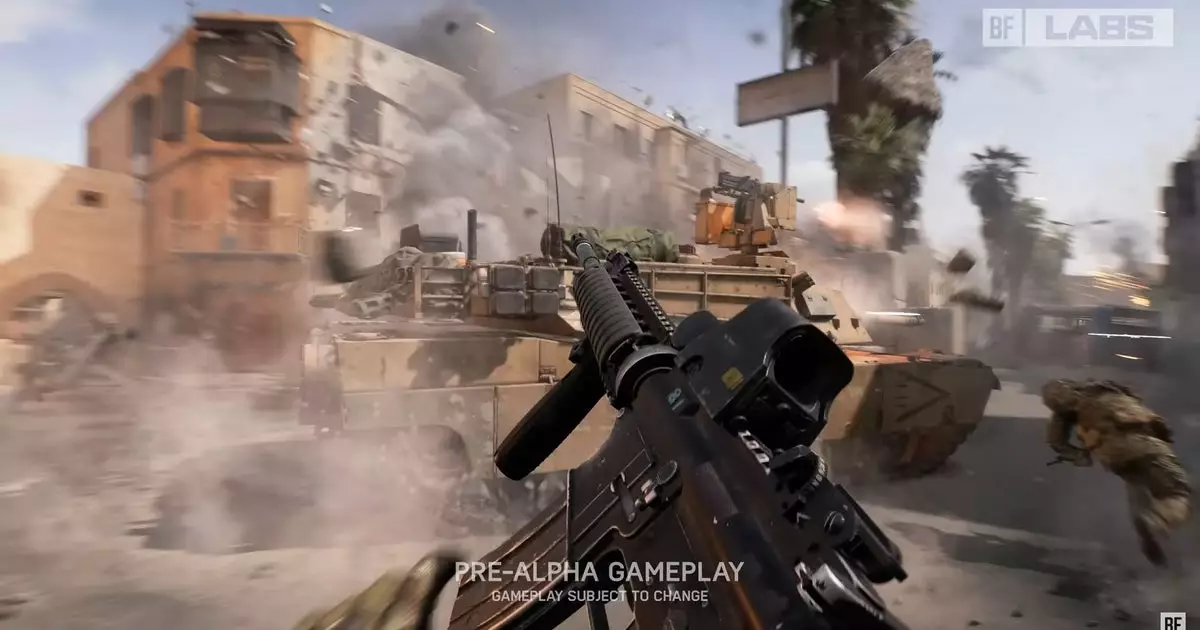With the gaming world ever-eager for the next big first-person shooter, the announcement of Battlefield 6 has sparked a flurry of excitement and curiosity. Captured in a recent promotional video, we are treated to a mix of action-packed explosions, urban destruction, and the familiar sounds of gunfire that fans of the series have come to cherish. However, amidst the adrenaline-fueled visuals lies a veneer that warrants a closer examination of how the game is marketed and what it promises – or doesn’t.
The producers’ dialogues abound with phrases like “leveling up” the “core experience,” but upon dissecting their claims, one wonders if there’s an illusion of innovation rather than meaningful changes. The heart of the Battlefield series often revolves around wreaking havoc on the battlefield—blowing up structures that stand in your way with a rocket-propelled grenade is a classic thrill. Yet, does this reveal a creative stagnation within the franchise? As the game evolves, should fans not expect more than just a return to familiar havoc? The reality might be that while gameplay mechanics evolve, the essence remains the same.
One intriguing aspect presented is the collaboration between four studios: Dice, Criterion, Motive, and Ripple Effect. Their joint effort emphasizes a collective ambition, yet it raises questions about the efficiency and cohesiveness of such an amalgamation. For instance, Criterion’s involvement in Battlefield 6 comes at a cost—one they incur by delaying their contributions to the next Need for Speed installment. This brings forth a pertinent issue: can a conglomerate really capture the spirit of a franchise without diluting the core team’s vision? Or does this cross-pollination lead to a disjointed product?
Another aspect highlighted in the promotional content is “Battlefield Labs,” which opens the gates for public playtesting. While this initiative could present enthusiasts with an early look at gameplay, it also underscores a growing trend within the industry—blurring the lines between consumer feedback and corporate testing strategies. Essentially, players are invited to experiment with the game under the guise of involvement, yet they must adhere to strict NDAs. Is this engagement truly collaborative or merely an elaborate market strategy to gather data while sidestepping the inherent risks of publishing a flawed product?
The promotional material, while visually captivating, glosses over significant issues within the development narrative. The omission of Ridgeline Games raises eyebrows about their closure and the potential loss of creative input from seasoned developers like Marcus Lehto. Audiences are left to speculate whether this underlines a larger trend of consolidation within EA, where profit comes at the expense of innovation.
As the excitement builds for Battlefield 6, it becomes imperative for gamers to temper their anticipation with a critical mindset. Although the series has a solid track record, the complexities of its development and the implications behind its marketing strategies suggest a landscape that is as uncertain as it is thrilling. Ultimately, while explosive gameplay and large-scale warfare remain assured elements, the true test lies in whether the developers can provide the fresh, nuanced experience that players are yearning for. Only time will tell if Battlefield 6 stands out in a crowded field or simply echoes its predecessors.


Leave a Reply